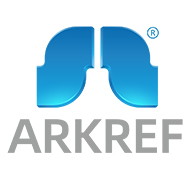Top 7 Innovations in Cold Storage Logistics

Cold chain logistics plays a vital role in ensuring the quality and safety of temperature-sensitive goods. As the demand for fresh produce, vaccines, and other perishable goods grows, you face increasing challenges in maintaining efficiency and sustainability. The global cold chain logistics market is projected to surpass $1 trillion by 2033, reflecting its critical importance in modern supply chains. Innovations like the logistic cold room are revolutionizing how you store and transport temperature-sensitive items. These advanced systems provide precise temperature control, ensuring the freshness and integrity of temperature-controlled goods across industries.
Innovation 1: Automation and Robotics
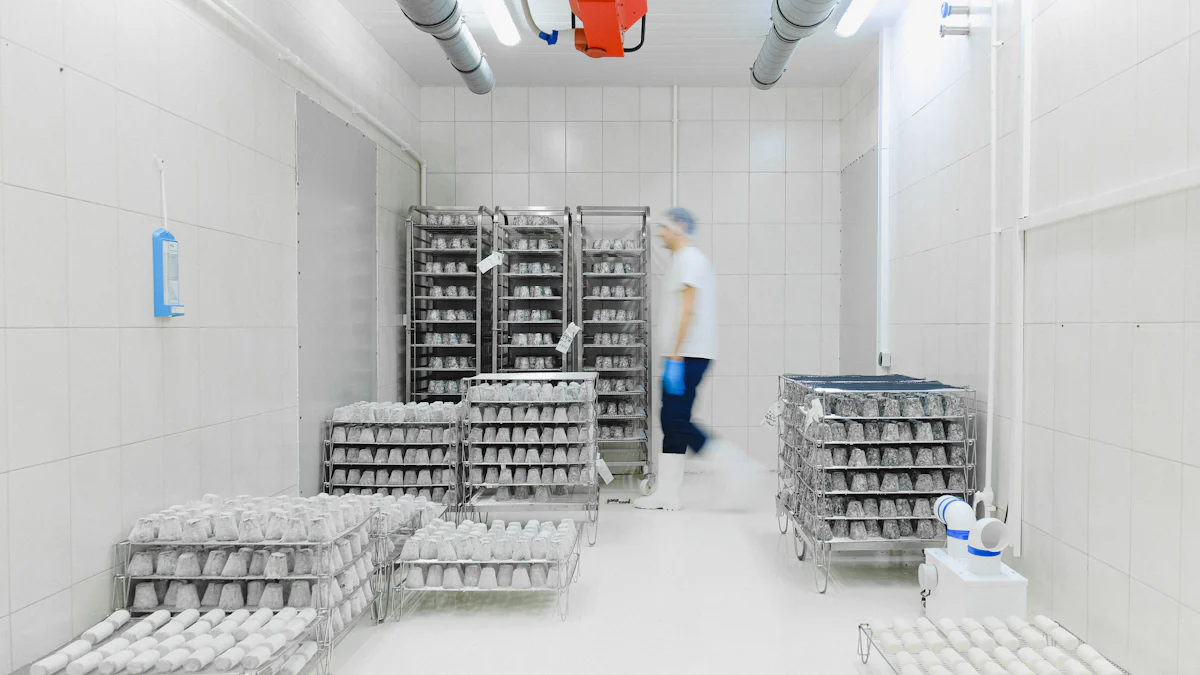
Automation and robotics are transforming the landscape of cold chain logistics. These technologies are not just trends; they are essential tools for improving efficiency, safety, and accuracy in operations. Cold storage warehouses, which require precise temperature control, benefit immensely from these advancements.
Warehouse Automation
Warehouse automation has become a game-changer in cold storage warehouses. Technologies like Automated Guided Vehicles (AGVs) and Automated Storage and Retrieval Systems (AS/RS) streamline the movement and storage of goods. These systems handle repetitive tasks such as transporting items in and out of cold storage, reducing the need for manual labor. This approach not only speeds up operations but also minimizes human exposure to freezing temperatures.
Autonomous Mobile Robots (AMRs) further enhance efficiency by automating material handling and improving picking processes. These robots navigate cold storage warehouses with precision, ensuring that goods are handled quickly and accurately. By integrating these systems, you can reduce errors, increase throughput, and maintain the quality of temperature-sensitive products.
"Automation in warehousing and transportation has been a key strategy to address labor shortages and improve operational efficiency in cold chain logistics."
Benefits of Robotics in Cold Storage
Robotics offers numerous advantages for cold storage facilities. Robots excel in environments where extreme temperatures make human labor challenging. They perform tasks with consistency and precision, ensuring that goods are stored and retrieved under optimal conditions. This reduces the risk of spoilage and maintains the integrity of perishable items.
Robotic systems also enhance workplace safety. By taking over physically demanding tasks, they lower the risk of accidents and injuries. For example, robots equipped with smart sensors can navigate tight spaces in cold storage warehouses without causing damage to goods or infrastructure. This level of precision ensures smooth operations and minimizes disruptions.
Additionally, robotics addresses labor shortages in the industry. As the demand for cold chain logistics grows, finding skilled workers for cold storage facilities becomes increasingly difficult. Robots fill this gap by providing reliable and scalable solutions. They also contribute to sustainability by optimizing resource use and reducing waste.
Incorporating automation and robotics into your cold storage operations is no longer optional. These technologies are essential for staying competitive in a rapidly evolving industry. By leveraging these innovations, you can enhance efficiency, ensure product quality, and meet the growing demands of cold chain logistics.
Innovation 2: IoT and Real-Time Monitoring
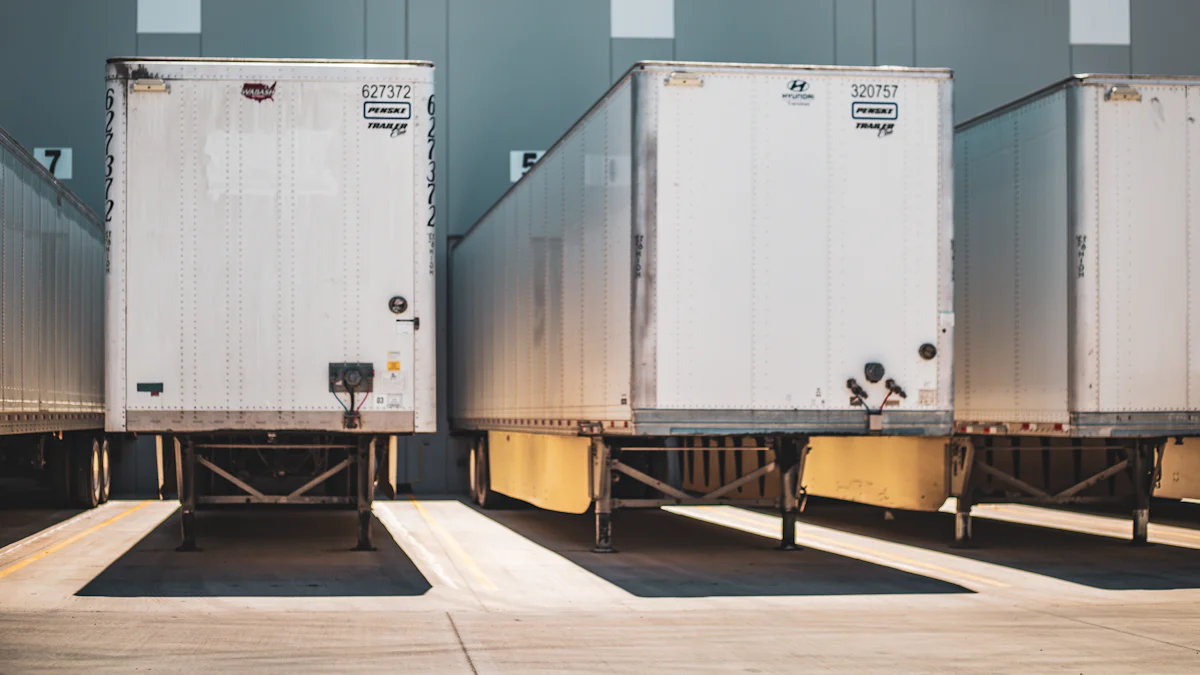
The Internet of Things (IoT) has revolutionized cold chain logistics by enabling precise monitoring and management of temperature-sensitive goods. With IoT, you can ensure optimal conditions throughout the supply chain, reducing waste and maintaining product quality.
Smart Sensors and IoT Devices
Smart sensors and IoT devices play a critical role in modern cold storage systems. These technologies continuously monitor key parameters like temperature, humidity, and energy consumption. By collecting real-time data, they provide you with actionable insights to maintain strict temperature control. For example, sensors can detect even minor temperature fluctuations and immediately alert you to take corrective action.
IoT devices also enhance transparency in cold chain logistics. They allow you to track the condition of goods during transportation and storage. This real-time visibility ensures that products remain within the required temperature range, preserving their quality and extending shelf life. Additionally, IoT-enabled systems integrate seamlessly with cloud-based platforms, giving you access to data from anywhere at any time.
"Sensors and IoT technologies enable precise monitoring and control of temperature along the entire supply chain, ensuring optimal conditions while reducing operational costs."
Benefits of Real-Time Monitoring
Real-time monitoring offers numerous advantages for cold chain logistics. It helps you prevent product spoilage by identifying temperature deviations early. Immediate alerts allow you to address issues before they escalate, saving both time and resources. This proactive approach minimizes product loss and ensures customer satisfaction.
Another benefit lies in cost efficiency. Real-time monitoring reduces energy consumption by optimizing refrigeration systems. You can analyze data trends to identify inefficiencies and implement energy-saving measures. This not only lowers operational costs but also supports sustainability efforts.
Real-time visibility also strengthens trust between you and your clients. When you provide accurate data on product conditions, clients gain confidence in your ability to deliver high-quality goods. This transparency enhances your reputation and sets you apart in a competitive market.
By leveraging IoT and real-time monitoring, you can transform your cold chain logistics operations. These technologies empower you to maintain strict temperature control, reduce waste, and improve efficiency. As the demand for temperature-sensitive goods continues to grow, adopting these innovations becomes essential for staying ahead in the industry.
Innovation 3: AI and Data Analytics
Artificial Intelligence (AI) and data analytics are reshaping cold storage logistics. These technologies empower you to make smarter decisions, optimize operations, and maintain the quality of temperature-sensitive goods. By leveraging AI and data-driven insights, you can enhance efficiency and reduce costs across your cold chain operations.
Predictive Analytics
Predictive analytics uses historical data and machine learning algorithms to forecast future outcomes. In cold storage logistics, this technology helps you anticipate potential issues before they occur. For example, predictive models can identify patterns in equipment performance, allowing you to schedule maintenance proactively. This reduces the risk of unexpected breakdowns and ensures uninterrupted operations.
You can also use predictive analytics to optimize inventory management. By analyzing demand trends, you can adjust stock levels to avoid overstocking or understocking. This minimizes waste and ensures that products remain fresh and ready for delivery. Additionally, predictive analytics enhances route planning by identifying the most efficient paths for transportation. This reduces fuel consumption and ensures timely deliveries.
"Predictive analytics transforms cold chain logistics by enabling proactive decision-making and reducing operational risks."
AI-Driven Optimization
AI-driven optimization takes cold storage logistics to the next level. AI algorithms analyze vast amounts of data to identify inefficiencies and recommend improvements. For instance, AI can optimize energy usage in cold storage facilities by adjusting refrigeration systems based on real-time conditions. This not only lowers energy costs but also supports sustainability efforts.
AI also enhances cold chain operations by improving resource allocation. It can determine the best way to utilize storage space, ensuring that goods are organized efficiently. This reduces handling time and prevents temperature fluctuations that could compromise product quality. Furthermore, AI-powered systems streamline labor management by assigning tasks based on worker availability and skill levels.
Enhanced cold chain operations rely heavily on AI's ability to process data quickly and accurately. By integrating AI into your logistics processes, you can achieve greater precision, reduce errors, and meet customer expectations. AI-driven optimization ensures that your cold storage operations remain competitive in an ever-evolving industry.
"AI-driven solutions revolutionize cold storage logistics by maximizing efficiency and maintaining product integrity."
Innovation 4: Sustainable Practices and Green Technologies
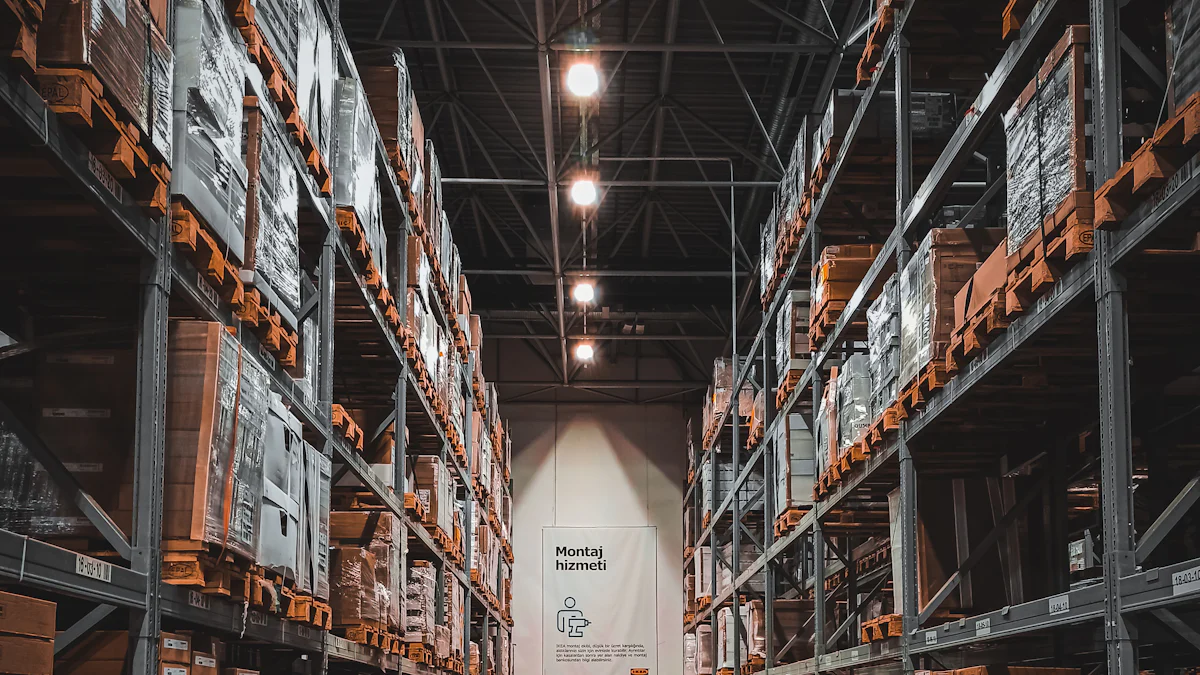
Sustainability has become a cornerstone of modern cold storage logistics. As environmental concerns grow, adopting green technologies and sustainable logistics practices is no longer optional. These innovations not only reduce environmental impact but also improve operational efficiency and appeal to eco-conscious consumers.
Renewable Energy Solutions
Renewable energy solutions are transforming how cold storage facilities operate. By integrating solar panels, wind turbines, or geothermal systems, you can significantly reduce reliance on traditional energy sources. These renewable options provide clean energy, cutting down on greenhouse gas emissions and lowering operational costs.
Energy efficiency plays a critical role in cold storage. Refrigeration systems consume a substantial amount of energy, especially for frozen goods. According to Selby, an expert in energy efficiency, “Energy use is the biggest outlay for cold storage facilities. Refrigeration is a major drain on resources.” By capturing wasted energy, such as heat generated by refrigeration units, you can repurpose it for other uses like heating water or maintaining facility temperatures. This approach maximizes energy utilization and minimizes waste.
Incorporating renewable energy into your operations also future-proofs your facility. As energy regulations tighten and fossil fuel costs rise, renewable systems ensure long-term sustainability. Facilities equipped with these solutions demonstrate a commitment to reducing their carbon footprint, aligning with global efforts to combat climate change.
"🌱 Sustainability Initiatives: The future of cold storage is green," states R-Cold Inc., a leader in sustainable logistics. "We’re committed to building facilities that not only meet today’s standards but are also future-proofed for the environmental challenges of tomorrow."
Eco-Friendly Refrigerants
Traditional refrigerants contribute significantly to global warming due to their high Global Warming Potential (GWP). Transitioning to eco-friendly refrigerants is a vital step in creating sustainable cold storage systems. These alternatives, such as ammonia, carbon dioxide, and hydrofluoroolefins (HFOs), offer effective cooling while minimizing environmental harm.
Eco-friendly refrigerants ensure that your facility operates under temperature-controlled conditions without compromising sustainability. They reduce the release of harmful gases into the atmosphere, helping you comply with environmental regulations. Additionally, these refrigerants often improve energy efficiency, further lowering operational costs.
Switching to sustainable refrigerants also enhances your reputation. Consumers and businesses increasingly prefer partners who prioritize environmental responsibility. By adopting these refrigerants, you position yourself as a forward-thinking leader in sustainable logistics practices.
In today’s eco-conscious world, implementing green technologies is essential for staying competitive. Renewable energy solutions and eco-friendly refrigerants not only reduce your environmental impact but also improve efficiency and cost-effectiveness. These practices ensure that your cold storage operations remain sustainable and aligned with the demands of a greener future.
Innovation 5: Advanced Packaging Solutions
Advanced packaging solutions have become essential in cold chain logistics. These innovations ensure that temperature-sensitive goods remain fresh and safe throughout their journey. By leveraging cutting-edge technologies, you can enhance product quality, reduce waste, and meet the growing demands of the industry.
Temperature-Controlled Packaging
Temperature-controlled packaging plays a critical role in maintaining the integrity of perishable goods. This type of packaging is specifically designed to regulate and maintain the required temperature range for your products. It ensures that items like fresh produce, pharmaceuticals, and frozen foods stay within optimal conditions during transportation and storage.
Modern temperature-controlled packaging uses advanced insulation materials and cooling agents. These components work together to create a stable environment, even when external temperatures fluctuate. For instance, gel packs, phase change materials (PCMs), and vacuum-insulated panels (VIPs) are commonly used to provide consistent cooling. These solutions help you prevent spoilage and extend the shelf life of your products.
Temperature-controlled packaging also supports regulatory compliance. Many industries, especially pharmaceuticals, require strict adherence to temperature guidelines. By using this packaging, you can meet these standards and ensure the safety and efficacy of your goods. This not only protects your products but also builds trust with your clients.
"Effective temperature-controlled packaging is the backbone of reliable cold chain logistics," says Cold Chain Technologies, a leader in packaging solutions.
Smart Packaging
Smart packaging takes temperature-controlled storage to the next level by integrating technology into the packaging itself. This innovation provides real-time monitoring and control, giving you unprecedented visibility into the condition of your goods. Technologies like RFID, NFC, and IoT sensors are embedded in the packaging to track temperature, humidity, and other critical parameters.
With smart packaging, you can receive instant alerts if conditions deviate from the required range. This allows you to take immediate action and prevent potential losses. For example, if a shipment of vaccines experiences a temperature spike, the system notifies you instantly, enabling corrective measures. This level of control ensures that your products remain safe and effective.
Smart packaging also enhances traceability. You can monitor the entire journey of your goods, from the point of origin to the final destination. This transparency builds confidence among your customers and helps you identify areas for improvement in your logistics process. Additionally, smart packaging reduces waste by ensuring that only products meeting quality standards reach the market.
By combining smart packaging with portable cold storage solutions, you can create a seamless temperature-controlled space for your goods. This collaboration ensures that perishable items remain fresh and safe, even during long-distance transportation.
"Smart packaging revolutionizes cold storage logistics by providing real-time insights and improving efficiency," highlights Packaging Digest, an authority in packaging innovations.
Advanced packaging solutions, including temperature-controlled and smart packaging, are transforming the cold chain industry. These innovations empower you to maintain product quality, reduce waste, and enhance operational efficiency. By adopting these solutions, you can meet the challenges of modern logistics and deliver exceptional value to your customers.
Innovation 6: Cold Chain as a Service (CaaS)
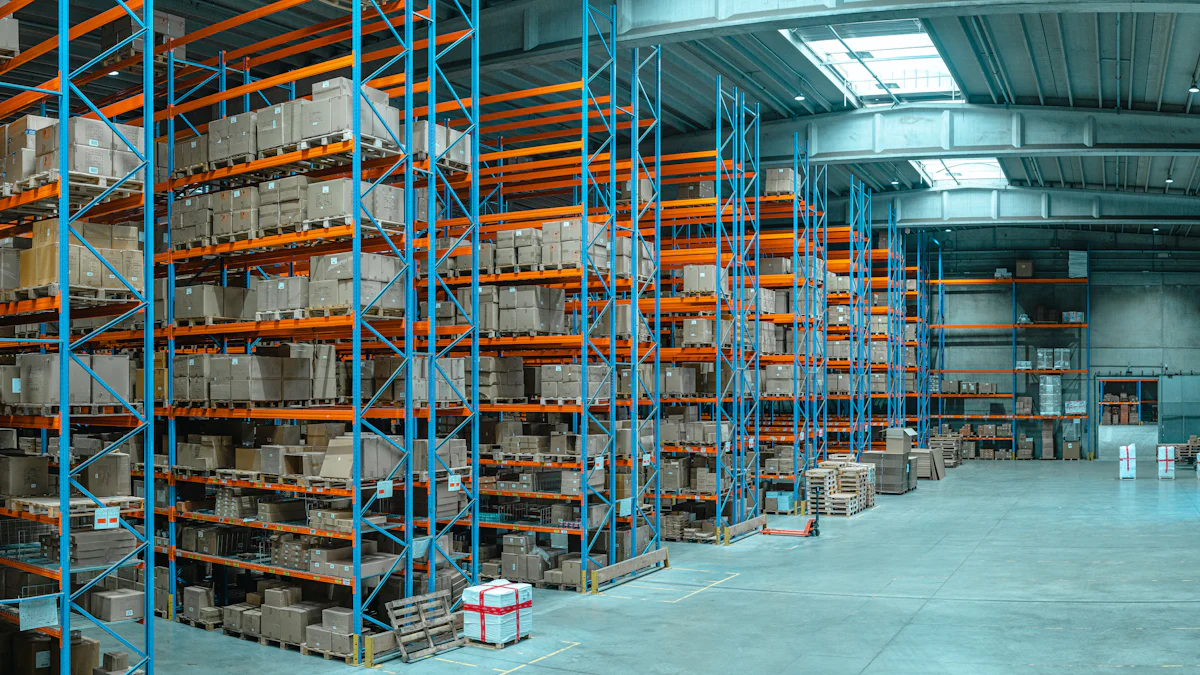
Cold Chain as a Service (CaaS) is revolutionizing how businesses manage their cold storage and transportation needs. This innovative model allows you to outsource critical aspects of cold chain logistics, enabling you to focus on your core operations while ensuring the integrity of temperature-sensitive goods.
Outsourcing Cold Storage Needs
Outsourcing cold storage needs through CaaS provides you with access to advanced infrastructure without the burden of owning or maintaining it. Providers of CaaS offer state-of-the-art facilities equipped with precise temperature control systems. These facilities ensure that your products, whether fresh produce or pharmaceuticals, remain in optimal condition throughout their storage period.
CaaS providers also handle refrigerated shipments with expertise. They utilize specialized vehicles and equipment to maintain consistent temperatures during transportation. This ensures that your goods arrive at their destination in perfect condition, meeting both regulatory standards and customer expectations.
By outsourcing, you can scale your operations based on demand. For instance, during peak seasons, you can increase your cold storage capacity without investing in additional infrastructure. This flexibility helps you manage costs effectively while maintaining high service levels.
"CaaS allows businesses to leverage cutting-edge cold chain transportation solutions without the need for significant capital investment," says a Supply Chain Manager from a Saudi Arabia-based large company.
Benefits of CaaS
CaaS offers several benefits that enhance your cold chain logistics operations:
Cost Efficiency: By outsourcing, you eliminate the need for upfront investments in cold storage facilities and equipment. This reduces capital expenditure and allows you to allocate resources to other areas of your business.
Expertise and Reliability: CaaS providers specialize in cold chain transportation and storage. Their expertise ensures that your goods are handled with care, reducing the risk of spoilage or damage.
Access to Advanced Technology: Many CaaS providers use cutting-edge technologies like IoT-enabled monitoring systems. These systems provide real-time data on temperature and humidity, ensuring that your products remain within the required range.
Regulatory Compliance: CaaS providers stay updated on industry regulations, ensuring that your refrigerated shipments meet all compliance requirements. This minimizes the risk of penalties and enhances your reputation.
Scalability: Whether you need additional storage space or more frequent deliveries, CaaS providers can adapt to your changing needs. This scalability makes it easier for you to respond to market demands.
"The global cold chain logistics market is evolving rapidly, and CaaS is emerging as a key solution for businesses looking to optimize their operations," highlights a Health Specialist in Cold Chain Logistics from a US-based very large organization.
By adopting CaaS, you can streamline your cold chain logistics, reduce costs, and ensure the quality of your temperature-sensitive goods. This innovative approach empowers you to stay competitive in an industry where precision and reliability are paramount.
Innovation 7: Enhanced Last-Mile Delivery
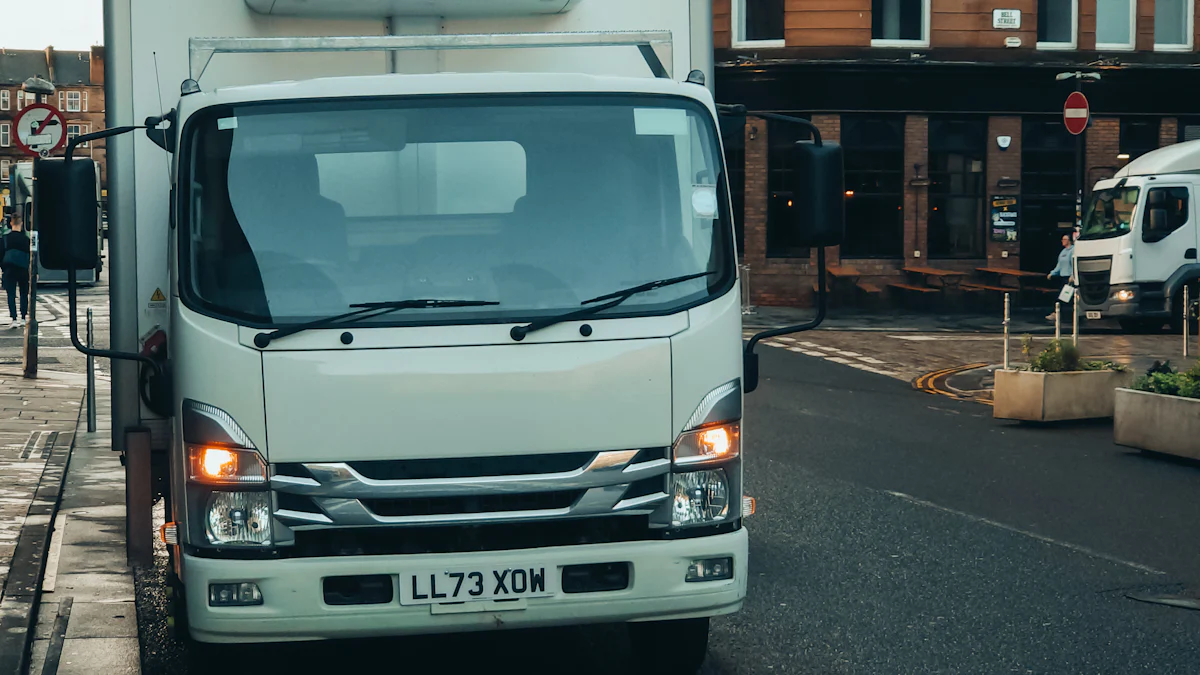
Last-mile delivery plays a critical role in cold chain logistics. It ensures that refrigerated products reach their final destination while maintaining the required temperature. Innovations in delivery vehicles and tracking systems have significantly improved the efficiency and reliability of this process.
Temperature-Controlled Delivery Vehicles
Temperature-controlled delivery vehicles are essential for transporting perishable goods. These vehicles are equipped with advanced refrigeration systems that maintain consistent temperatures, ensuring the quality of your products. Whether you are delivering frozen foods or pharmaceuticals, these vehicles provide the precise conditions needed to preserve freshness and efficacy.
Modern delivery vehicles often integrate IoT-based technologies. For example, temperature sensors and door sensors continuously monitor the internal environment. These devices detect even minor fluctuations and send alerts, allowing you to take immediate action. This level of control ensures that your refrigerated products remain within the required temperature range throughout transit.
Additionally, GPS-enabled vehicles enhance route efficiency. By optimizing delivery paths, you can reduce travel time and fuel consumption. This not only lowers operational costs but also minimizes the risk of temperature deviations caused by delays. With these vehicles, you can meet customer expectations for timely and high-quality deliveries.
"Temperature-controlled vehicles equipped with IoT devices create an unbroken cold chain, ensuring product integrity from start to finish."
Delivery Tracking and Optimization
Delivery tracking systems have revolutionized last-mile logistics. These systems provide real-time visibility into the location and condition of your shipments. By using GPS and IoT technologies, you can monitor every stage of the delivery process.
Tracking systems also improve transparency. You can share real-time updates with customers, building trust and enhancing satisfaction. For instance, customers can track their orders and receive notifications about estimated delivery times. This level of communication strengthens your reputation as a reliable service provider.
Optimization software further enhances last-mile delivery. These tools analyze data to identify the most efficient routes and schedules. By reducing unnecessary stops and delays, you can ensure that products arrive on time and in perfect condition. This approach not only improves customer satisfaction but also supports sustainability by lowering fuel usage.
"Investments in tracking and optimization software enable businesses to maintain an unbroken cold chain while improving operational efficiency."
Enhanced last-mile delivery combines advanced vehicles and tracking systems to meet the growing demands of cold chain logistics. By adopting these innovations, you can ensure the safe and timely delivery of temperature-sensitive goods, setting a new standard for reliability in the industry.
The seven innovations discussed are reshaping cold chain logistics, addressing challenges in efficiency, sustainability, and scalability. From automation to advanced packaging, these technologies ensure the quality and safety of temperature-sensitive goods. Solutions like the Logistic Cold Room exemplify how cutting-edge systems meet modern supply chain requirements with precision and reliability. As digitalization and sustainability continue to evolve, you can expect even greater advancements in supply chain management. These innovations pave the way for a future where cold chain logistics becomes more efficient, eco-friendly, and adaptable to changing demands.
See Also
Leading Manufacturers Of Cold Rooms For Logistics Solutions
Revolutionizing Goods Storage With Cold Room Technology
Comparing Container Cold Rooms And Conventional Storage

